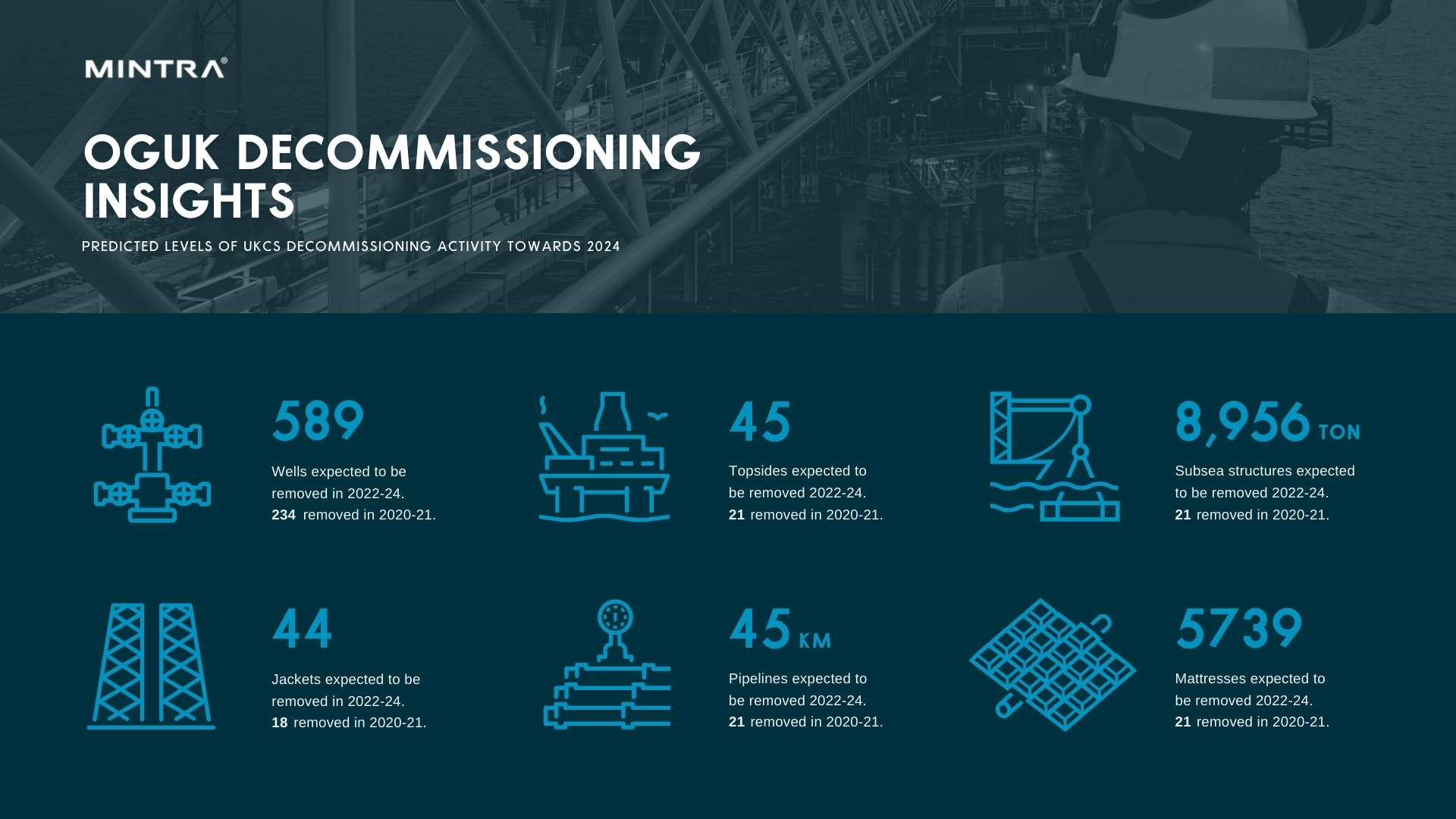Decommissioning activities double as net zero gathers pace
The decommissioning of offshore installations is a growing part of the oil and gas industry as reservoirs become depleted and installations age. It is a common misconception that decommissioning activities take place only at the end of an asset’s life. On the contrary, decommissioning is a consideration from the very start along with planning, designing, operating and maintaining – essentially every stage of its lifecycle.
It’s been over 50 years since oil was first discovered in the North Sea and over that time more than 45 billion barrels of oil equivalent have been extracted. Oil fields, however, provide a finite resource.
When the oil stops flowing and the field production cycle comes to an end, operators must dismantle the infrastructure and return the surrounding area to a natural state. Decommissioning of redundant infrastructure now represents a significant undertaking for operators in the UKCS, with budgets poised to grow significantly in the years to come. It is estimated that around 1,600 wells are on course to be decommissioned by 2030.
Over the past two years, the journey towards decarbonisation has stepped up a gear and the energy industry as a whole understands the urgency of a transition towards renewables. As decommissioning will result in a reduction in carbon emissions as assets come offline, it may be that operators will target even more resources towards end of field life.
However, activities around decommissioning are extensive and complex and even workers who have been at the heart of the oil and gas industry must develop an understanding of how they differ from traditional production operations.
Mintra developed, in partnership with engineering experts Amec Foster Wheeler, a suite of six decommissioning elearning courses that provide essential knowledge in the fundamentals of decommissioning.

While these courses are hugely beneficial for those who will be working on end of field life activities, they are suitable for anyone with an interest in decommissioning, from non-governmental organisations through to financial services. The content is appropriate for an international market, especially those involved in activities in the UKCS, Norwegian North Sea, Gulf of Mexico and Australia.
The six elearning courses in the suite are:
Introduction to Decommissioning (30 minutes) covers the influences in the decommissioning process, types of installation decommissioned and the key phases in a programme.
Subsea Infrastructure Decommissioning (40mins) covers the elements of subsea infrastructure that are decommissioned and how it is done, the preparations before work can begin and recovered materials.
Facilities Decommissioning (30mins) includes what tasks are performed during hook-down, how topsides and substructures are removed and how external factors impact the work.
Permanent Well Abandonment (45mins) explores how well plugging and abandonment fits in with the timeline of a decommissioning project and what influences the process, the stages involved, and the risks and challenges faced.
Planning for Decommissioning (40mins) covers a typical project timeline highlighting the key phases and activities associated with decommissioning, critical factors that influence planning for decommissioning and what affects the delivery.
Dismantlement & Resource Management (40mins) includes why resource management is needed and the resources decommissioning generates, where and how dismantlement takes place and the importance of reporting.
Decommissioning will continue to be an exciting space within the energy sector and while the gradual switching off of oil fields will contribute to a reduction in greenhouse gasses, decommissioning itself is a carbon-intensive activity. The industry is committed to developing ways of reducing or limiting emissions and this will become another thriving extension of decommissioning activity in the years to come.
Interested in learning more about decommissioning? Find out where decommissioning materials go when an asset is dismantled in this article.
Insights & News
At Mintra, we're so much more than just a team—we're a force driving innovation and excellence in maritime training across Europe.
We’re excited to be taking the stage at one of Europe’s leading showcases of organisational learning.
We are delighted to share the exciting news that our People and Culture team has been shortlisted for the prestigious cHeRries Awards!